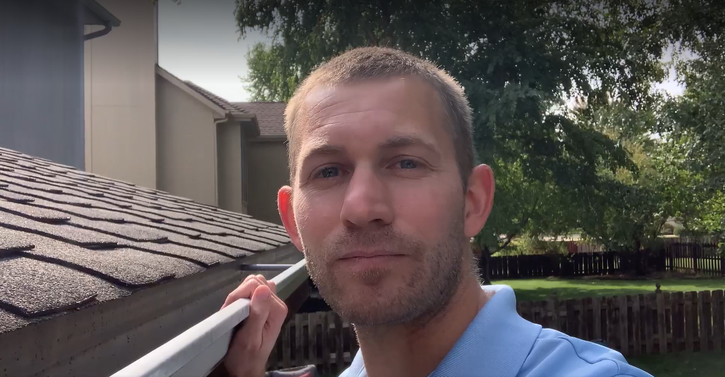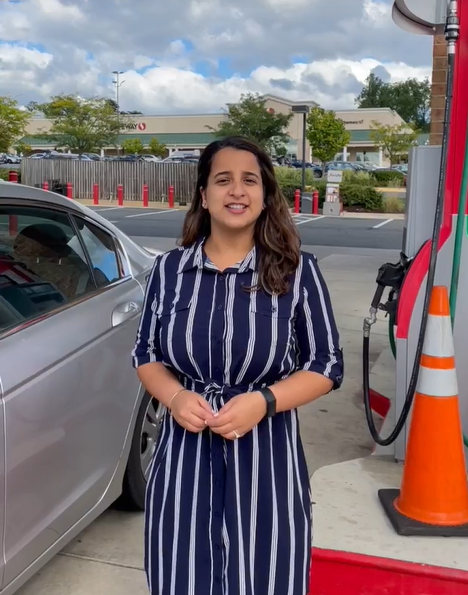Watch our economists share their everyday economic perspectives on video.
For those who aren’t trained economists, hearing the word “economics” might give you pause or make you run the other direction. But using an economic way of thinking is something you’re probably doing every day to help you make decisions, even if you’re not consciously aware of it. Our economists share some of the economic concepts they use in their everyday lives below. We bet you’ve likely made similar decisions (even if you didn’t realize you were considering the price elasticity of various goods).
Opportunity cost
Cortney Cowley, senior economist, uses trips to her favorite bookstore to teach her twin preschoolers about economics.
“Scarlett and Ryder really like to go to one of our local bookstores, and it has a toy section, book section and a coffee shop. When we go, the kids can choose something in the $5-$10 range – a book, small toy or food treat,” she said.
Cowley said her daughter always chooses a book – and her son always chooses a toy. As for herself? She chooses the coffee.
“When we choose our items, we are considering the opportunity cost – whatever we give up to get something else. So Scarlett’s opportunity cost is the treat and toy, and Ryder’s is the book and the treat.”
While Cowley might be less concerned about her opportunity cost of a book or toy, she did say that her daughter has learned that with her love of books she can go to the library instead and get many more books that are free.
“She gives up the ability to make an investment in a book and keep it long term, but she gains more books to enjoy short-term and gets to spend the money on something else!”
Specialization
Are there economic decisions to make when it comes to outdoor and yard work? Absolutely, according to senior research and policy advisor Brent Bundick.
“A storm hit this year and the high wind caused clogged gutters at my house. Some gutters I could easily reach with my ladder, but others were much higher and would’ve required a longer ladder and taking the risk that I could injure myself.”
Bundick said his choices were to take the day off and purchase a larger ladder or specialize and hire a professional gutter cleaning service.
“Specialization basically means the whole economy is better off when people do the types of things they’re naturally good at and let others do the things they aren’t naturally good at,” he said. “So I decided to specialize and do what I was good at – being an economist! I didn’t take a day off work and I hired a professional service to clean the gutters.”
He notes that specialization can happen at the micro level – like hiring someone to clean gutters or wash windows – or at the macro level, where a country decides to specialize in producing the goods and services that they naturally have or are good at.

Sunk Costs
Is economics for the birds? Nate Kauffman, economist and Omaha Branch Executive, thinks that some economic concepts just might be.
“Last year we decided to invest in a backyard chicken flock as a birthday present for my daughter Leia, and this made her very happy,” he said. “Sometimes though, chickens can be a pain and they cost money to take care of. And even though we sell some of our eggs, we have to pay for chicken feed. The chicken coop we built cost a lot of money too.”
Kauffman said that they could decide to get rid of their chickens because they cost a lot of money to take care of, but that doesn’t consider the economic concept of sunk costs.
“Sunk costs are something you’ve already paid for where the costs can’t be recovered. These costs shouldn’t be factored into how you make decisions about the future,” he said.
When it comes to the chickens, Kauffman said they shouldn’t make decisions for the future based on the cost of the chicken coop because that is a sunk cost. Plus – getting rid of the chickens would make Leia sad.
“We should consider only those costs that are not already sunk – and we’ll decide to keep the chickens and keep Leia happy.”
Price elasticity and inelasticity of demand
Filling up your car at the gas station can cause sticker shock when the price for a gallon of gas goes up by twenty cents overnight. But research associate Chaitri Gulati explains that you have an everyday economic decision to make as you face the pump.
“What can I do if the price goes up? I still need gas to get to work and back, so I still buy the gas. This is a classic example of price inelastic demand. An increase or decrease to a certain extent in the price of a gallon of gasoline won’t change the quantity I buy for everyday use.”
In contrast, there are times we are willing to make the tradeoff and not purchase something at its advertised price. Those lovely new shoes you see advertised for over $100 a pair? You might be willing to live with what you have until that sleek new pair goes on sale, Gulati contends.

“Unlike gasoline and other inelastic products, I don’t need brand new shoes right away – I can wait for a better price. This is an example of price elastic demand; the changes in the price of an elastic good can lead to large changes in the quantity demanded,” she said.
When it comes to inelastic goods – like fuel, basic food products and medications – the demand for those products will remain steady no matter the price. But the demand for elastic goods can snap like a rubber band – we’re likely to buy fewer of or search the sales for those luxury goods, brand-name clothes and other electronics if the prices rise too high.
Selection
You may have learned about natural selection in biology class – the survival of the fittest. But research and policy officer José Mustre-del-Río said the economic concept of selection focuses on human behavior in the real world and the conclusions we can draw from that behavior. A great example to illustrate the concept? NFL quarterbacks.
“Arguably two of the most impressive quarterbacks in the NFL right now are the Chiefs’ Patrick Mahomes and Russell Wilson of the Seattle Seahawks. One trait that these two quarterbacks share is that they both played college football and baseball,” he said.
Mustre-del-Río notes that you could infer that all quarterbacks should play baseball and then they’d turn into amazing professionals in the NFL. He said, however, that this is where the concept of selection comes into play.
“It’s very likely they both selected into playing baseball and football because to begin with they were amazing athletes with amazing athletic backgrounds. So this is really where human behavior and decision making can change inference,” he said. “Here this rather suggests that playing baseball and football is an indicator of being a good athlete – not that playing college baseball is a good indicator of future success in the NFL.”
Selection can be a powerful tool to apply in your daily life and decision-making, Mustre-del-Río says, helping you ensure that when you make an inference you are considering all of the factors at play.
